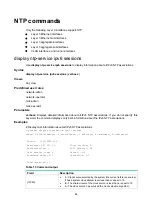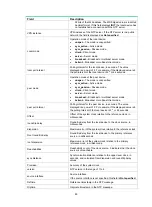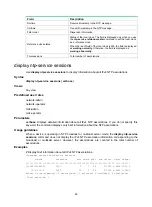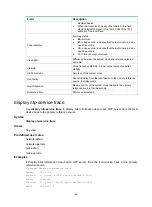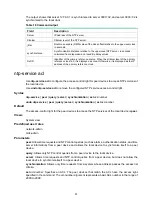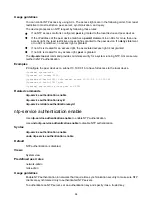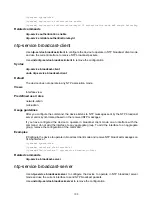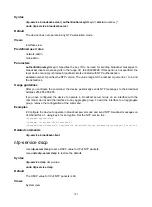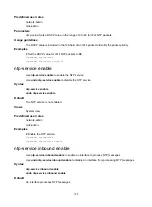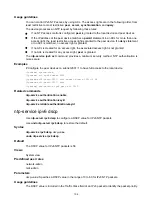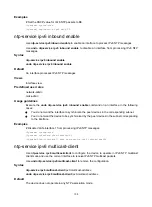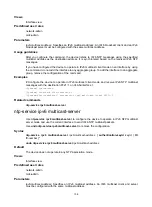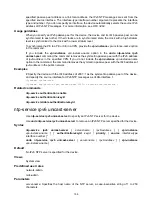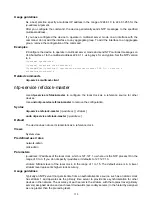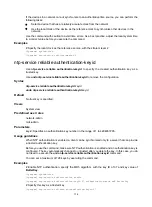
99
Examples
# Enable NTP authentication.
<Sysname> system-view
[Sysname] ntp-service authentication enable
Related commands
ntp-service authentication-keyid
ntp-service reliable authentication-keyid
ntp-service authentication-keyid
Use
ntp-service authentication-keyid
to set an NTP authentication key.
Use
undo ntp-service authentication-keyid
to remove the NTP authentication key.
Syntax
ntp-service authentication-keyid
keyid
authentication-mode md5
{
cipher
|
simple
}
value
undo ntp-service authentication-keyid
keyed
Default
No NTP authentication key is set.
Views
System view
Predefined user roles
network-admin
mdc-admin
Parameters
keyid
: Specifies a key ID to identify an authentication key, in the range of 1 to 4294967295.
authentication-mode
md5
value
: Uses the MD5 algorithm for key authentication.
simple
: Sets a plaintext authentication key.
cipher
: Sets a ciphertext authentication key.
value
: Specifies the MD5 authentication key string. If
simple
is specified, it is a string of 1 to 32
characters. If
cipher
is specified, it is a string of 1 to 73 characters.
Usage guidelines
In a network where there is a high security demand, the NTP authentication feature must be enabled
for a system running NTP. This feature enhances the network security by using client-server key
authentication, which prohibits a client from synchronizing to a device that has failed the
authentication.
After you specify an NTP authentication key, use the
ntp-service reliable authentication-keyid
command to configure the key as a trusted key. The key automatically changes to untrusted after you
delete the key. In this case, you do not need to execute the
undo ntp-service reliable
authentication-keyid
command.
You can set a maximum of 128 keys by executing the command.
The authentication key, set in either plain text or cipher text, is saved to the configuration file in cipher
text.
Examples
# Set a plaintext MD5 authentication key, with the key ID of
10
and key value of
BetterKey
.


